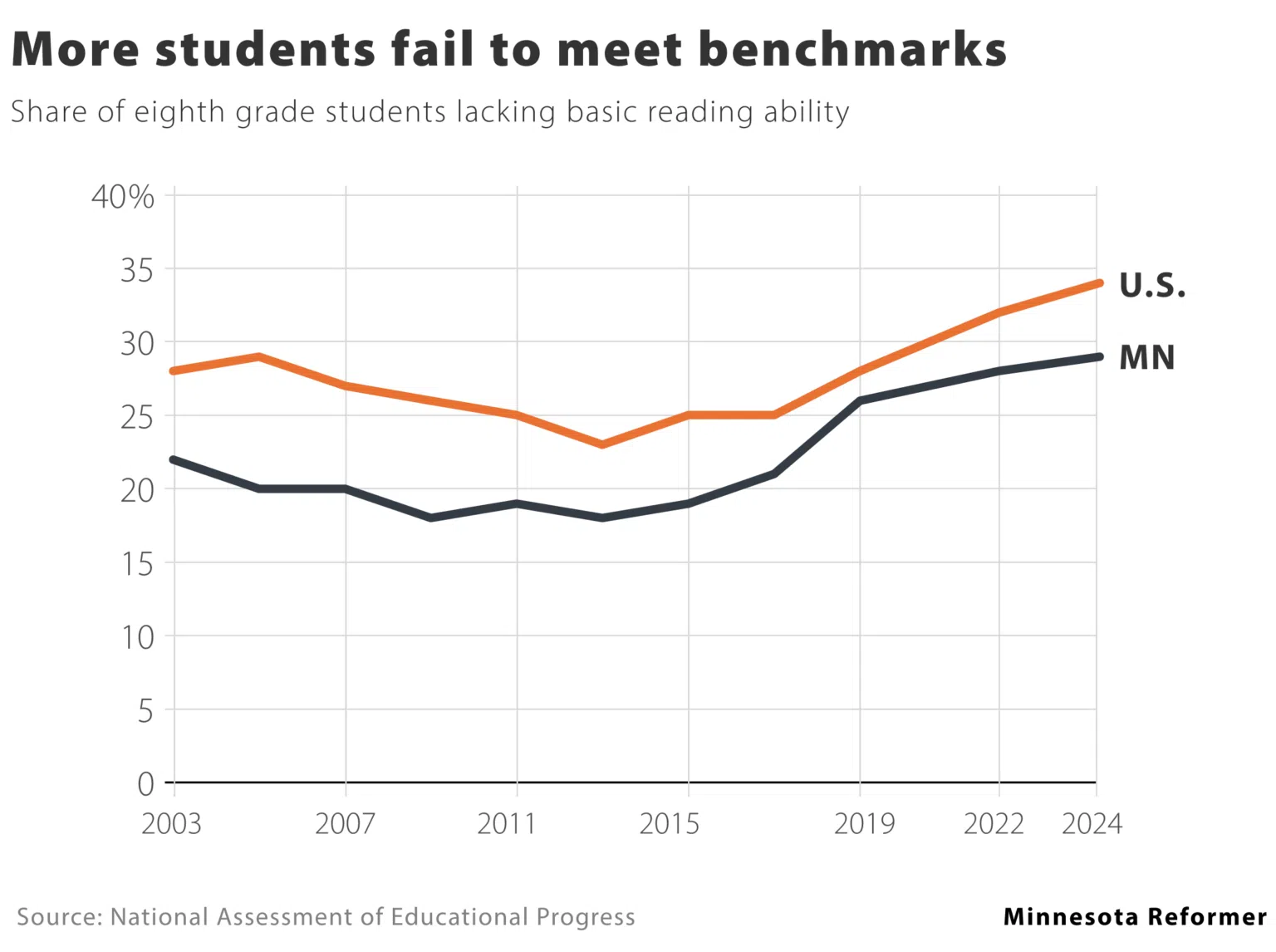
By: Christopher Ingraham
ST. PAUL, Minn. (Minnesota Reformer) – The share of Minnesota eighth graders failing to meet basic reading achievement standards edged up to the highest level on record in 2024, according to national benchmark test results released this week.
The data, from the National Assessment of Educational Progress, shows that 29% of Minnesota eighth grade students failed to demonstrate a minimum level of reading ability. While the change from 2022 to 2024 is not considered statistically significant, a decade ago just 18% of eighth graders were performing as poorly.
Conversely, the share of Minnesota eighth graders rated “proficient” at reading fell to 28%, the lowest level on record. That number has fallen by 12 percentage points since 2015.
Eighth graders without a basic level of reading ability have trouble understanding the meaning of key words; are unable to make simple inferences about a text; and struggle to understand basic elements like an order of events, a character’s motivation or the main idea of a passage.
As in many states, white children performed better than Black or Hispanic children, girls performed better than boys, and scores in suburban districts were higher than those in urban or rural ones.
Education Minnesota, the state teacher’s union, noted that on average Minnesota students performed better than their peers nationally. “It’s good to see that Minnesota students continued to score higher in math and reading than the national averages and stayed about even with students who took the tests two years ago,” said Denise Specht, president of the union. “However, Minnesota needs to continue investing in the educator workforce to make real progress toward returning academic achievement to pre-pandemic levels.”
Minnesota’s recent struggles mirror the country’s. Nationally, 34% of eighth graders are not meeting basic reading standards, also a record high. “NAEP has reported declines in reading achievement consistently since 2019,” said Daniel McGrath of the National Center for Education Statistics, in a statement. “The continued declines since the pandemic suggest we’re facing complex challenges that cannot be fully explained by the impact of COVID-19.”
On math the national numbers are even more dire, with 41% of middle school students failing to meet benchmarks. In Minnesota the share, which fell slightly in the past year, is now 29%.
The NAEP tests, which are designed to allow comparisons between states, are different than Minnesota’s own standardized assessments, which also show stagnating proficiency in reading and math.
While pandemic learning loss is one factor in the declining scores, experts are now looking to factors like chronic absenteeism and rising screen time as possible drivers of the ongoing stagnation.
One relatively bright spot in the national data is Louisiana, which stands alone as the only state to post a significant increase in fourth grade reading scores since 2019. The state’s recent embrace of the science of reading curriculum, which emphasizes traditional phonics-based reading instruction, may be playing a role there.
Minnesota also recently adopted that curriculum, although the rollout is only just beginning.
Lagging student achievement has bedeviled the administration of Gov. Tim Walz, himself a former public school teacher. Despite record investments in public education, achievement in Minnesota has fallen more sharply than nationwide. Schools continue to face budget shortfalls, in part due to declining enrollment.
Many charter schools, once pitched as an alternative to failing public schools, are performing even worse than their traditional counterparts.




Comments